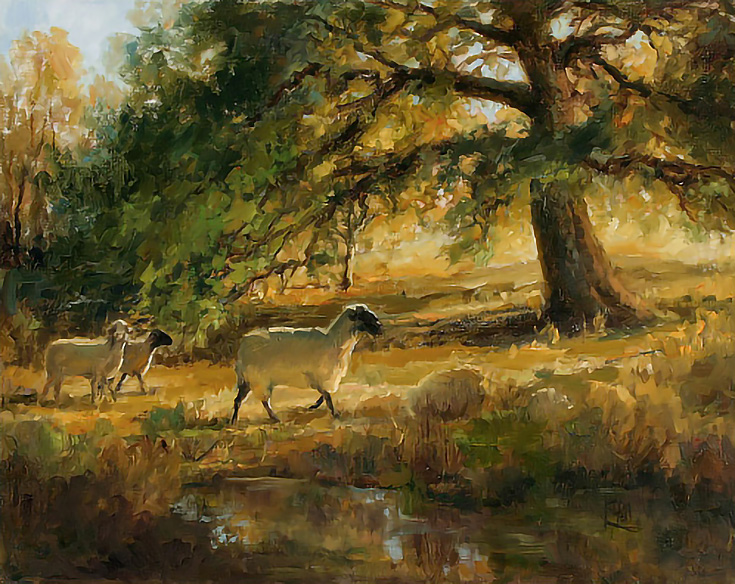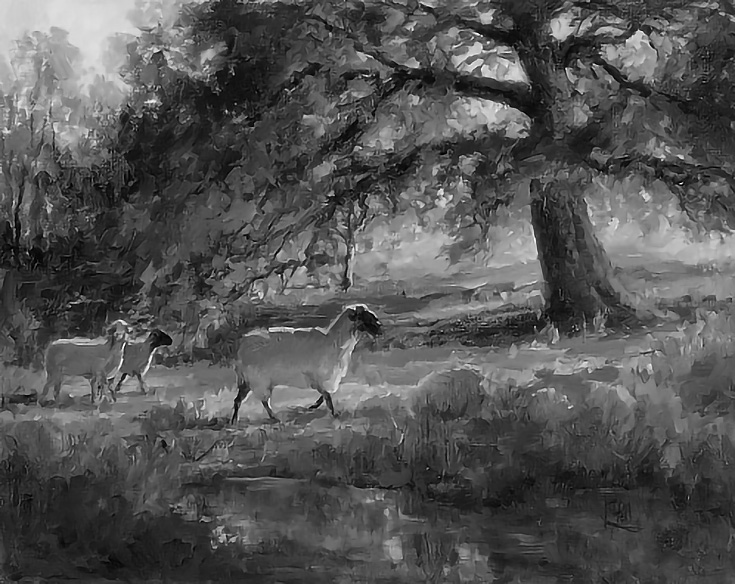Imagine music without a clear melody. . . In art, a close equivalent to that would be a painting without clear values or colors. Just as the notes and rhythms of a melody lead us through a musical piece, it is value and color that move us through a painting.
But what exactly are the roles of these two indispensable elements? Let’s start off by taking a look at value.
The role of value in art
We all know what value is. It’s a term we use to refer to lights and darks, which are arguably the most important of all the visual elements. Without value variations we could not even see the subject—in pitch black or blinding light or even thick gray fog, for example, we see nothing.
Moreover, we’ve heard repeatedly from our instructors that if we get the value right, the color can be off and the painting will still work. Is this always true? Perhaps not, but there is a lot of truth to it.
So why is value in art so important? There are two reasons.
1. Values describe the scene in ways that colors cannot
In a representational painting, value plays the role of describing three important characteristics of the subject:
1. Whether the subject has volume or is flat.
2. What kind of texture the surface of the subject has.
3. Where the light source is located, and how bright it is.
Interestingly, paintings do not need color to play these informational roles. Take a look at this painting by Lilli Pell, with full color.
Now look at the same painting, without the color:
Notice that without the color we still read the shape and form of the sheep and tree; we still understand the texture of the sheep, grass and foliage; and we know that the sun is located low in the sky and off to the right.
Value in art, then, makes it possible for us to know what we’re looking at. Without clear values in a painting, objects will appear flat, lifeless, and uninteresting. But value has another role, too.
2. Values create the visual structure of an image
The darks and lights of a painting do more than just provide descriptive information—they also determine its structure. Look at this:
I have found the notan of Pell’s painting by converting into black its shadow areas and leaving white areas where the light strikes. This makes it easier to see how the darks link to one another, causing the pattern that is the painting’s structure.
Whether we realize it or not, there is a definite value pattern in every good painting that knits every shape together while keeping our eyes interested.
In the above examples we see three paintings by Charles Reid, Anders Zorn and Jan Vermeer, respectively. Underneath each is a notan showing the painting’s value structure. Lights link to other lights and darks link to darks (whether by actually touching or by their relational positions) to create three very distinctive patterns.
In the Reid painting, large amounts of background lights link to smaller amounts of lights within the subject. The light to dark ratio is about 70/30.
In the Zorn painting, the opposite is true. Large amounts of background darks link to smaller amounts of darks within the subject—and the light to dark ratio is reversed too.
In the Vermeer, the light to dark ratio is nearly equal and both the foreground and the background contain large areas of lights and darks, as well as detailed sections.
Each of these three artists have not only observed the location of the light source and used it to describe their subjects, but they’ve also emphasized and refined that information to create an appealing visual structure.
If you’d like to improve the visual patterns in your own paintings, check out this notan painting tutorial. With practice, you can learn to create much stronger compositions through deliberate use of darks and lights in your underpaintings.
Come back next week as we look at the role of color in paintings—value is very important, but color has a specific purpose as well.
This post may contain affiliate links.







